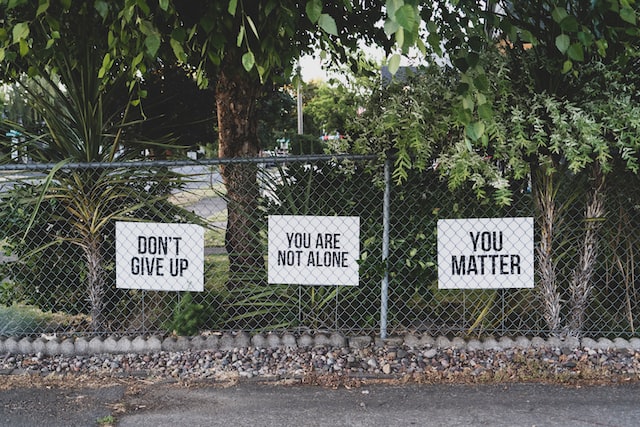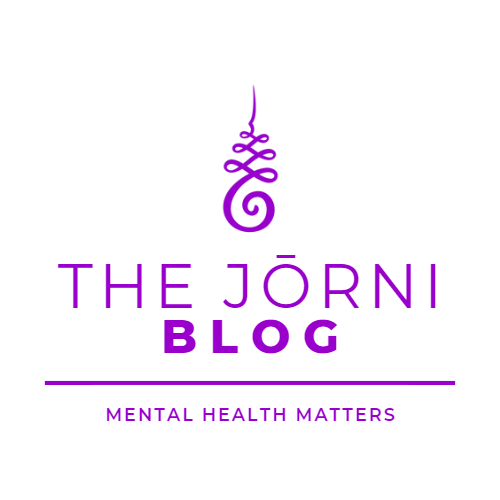Suicide Awareness
Some listeners and readers may be triggered by this content and listener and reader discretion is advised.
Suicide is a heartbreaking reality for many people, families, and communities all around the world. It is a leading cause of death, and the consequences reach far beyond the lives of those who commit suicide themselves. As a result, suicide prevention and awareness are more vital than ever before.
In this post, we will look at the risk factors, warning signals to watch for, and some prevention techniques. We will also explore the importance of awareness and ways to become involved. By working together in spreading awareness and education about suicide, we can support people in need.
My guest for this week’s podcast episode was La Toya Bond. She is a legal support professional, radio personality and a small business owner. She is also the host of "Speaking Of Love Podcast", created in honor of her father who took his own life in a murder-suicide.
Suicide has a tremendous impact on society besides the emotional toll it causes.
Suicide is in the top three leading causes of death worldwide. And there are many more people who attempt suicide and never receive any support. Suicide can also lead to an increase in sadness, anxiety, and substance misuse among people who have lost a loved one.
“To anyone out there who’s hurting — it’s not a sign of weakness to ask for help. It’s a sign of strength.”
- Barack Obama
Given the profound consequences of suicide, we need to take action to prevent it and support people at risk. We can save lives and build healthier, more resilient communities. And we can raise awareness, implement effective preventative initiatives, and commit to lowering stigma.
Suicide Risk Factors
Risk factors can include mental health distress, such as depression, anxiety, PTSD, and bipolar disorder. But trauma, loss, and a sense of futility or desperation are also common risk factors. Veterans, LGBTQ+ people, and youth are among the demographic categories most at risk of suicide. Understanding these risk factors is critical for supporting individuals who may be at higher risk.
Physical or sexual abuse, for example, can increase the risk of suicide. The impact of trauma on mental health can be severe, increasing the chance of despair, anxiety, and other illnesses that increase the risk of suicide.
Suicide can also be triggered by loss, such as the death of a loved one or the end of a relationship. The death of a loved one can cause feelings of despair and hopelessness, making it difficult for people to see a way forward.

Veterans can be at higher risk of committing suicide and there are several factors involved. This can include physical and emotional scars from combat, the change to civilian life, and the prevalence of mental health distress such as PTSD.
Racial and ethnic minorities and members of the LGBTQ+ community are also at higher risk. They face racism, discrimination, prejudice, stigma, and a lack of supportive environments. Some struggle with loneliness and hopelessness, which can increase the risk of suicide.
Teenagers are also more likely to commit suicide due to school-related stress and pressure. These can include bullying or interpersonal issues.
It is critical to understand the specific issues some people may encounter. The more awareness is raised, the better we can support individuals who are struggling. We need to build inclusive and supportive environments and address the underlying causes in order to help.
SUICIDE Warning Signs
As La Toya talks about in the podcast episode, there can be warning signals. But, often there are no warning signs and people are completely unaware. Some better known warning signs can include talking about wanting to die; expressing thoughts of hopelessness or worthlessness; withdrawing from friends and hobbies; and exhibiting significant mood changes. You may also witness a loved one giving up valued items, increasing substance use, and creating a plan.

Often, we don’t take these signs seriously. We might not think the person would actually go through with it. Or, we might hope they will get better and this is just a “phase”. It is critical to be aware of and take these warning signs seriously. If you notice someone you know exhibiting these signs, get in touch and offer support. You can also encourage this person to get help from a professional. It’s better to be concerned once too often, than to miss the signs when something feels off.
Physical and Behavioral Changes
Changes in sleep patterns: This can include sleeping difficulties, sleeping excessively, or experiencing insomnia.
Increase in substance use, especially alcohol and drugs.
Appetite changes: This might include both a sudden loss of appetite and an increase in appetite.
Individuals contemplating suicide may experience weariness, headaches, stomach difficulties, and other physical symptoms.
Suicidal individuals may exhibit indicators of depression, such as a loss of interest in previously appreciated activities, thoughts of hopelessness and worthlessness, and difficulties in concentrating. They may also retreat from friends and family, display shame or rage, and experience a significant change in energy levels.
Suicidal ideation: Suicidal individuals may express a desire to die or take their own life, or they may express emotions of being a burden to others.
Suicide planning is preparing a suicide plan, such as acquiring a weapon or collecting medications.
Understanding suicide warning signs and getting help are critical in preventing suicide and supporting individuals who are struggling. We can save lives by being proactive and reaching out to those we think may be in need.
Suicide Prevention
What can we and our communities do to raise awareness and provide education?
Increasing access to mental health services and resources, such as counseling and support groups, can be helpful.
Addressing risk factors: Addressing underlying reasons of distress, such as substance misuse or financial troubles, might be part of this process.
Increasing social support, strengthening resilience, and fostering healthy coping methods are all examples of ways to improve protective factors.

Restricting access to lethal means: This can include limiting access to firearms, prescription medications, and other suicide methods.
Raising public awareness of the warning signs of suicide, the significance of seeking help, and accessible services and support.
Implementing community-based programs: This might include school-based programs, workplace initiatives, and community-wide campaigns to raise awareness and educate about prevention.
Evidence-Based Prevention Strategies
Evidence-based prevention techniques can also help with lowering the risk of suicide and supporting people who are contemplating suicide. Here are the three most widely used evidence-based preventative strategies:
Cognitive-behavioral therapy (CBT) is a type of psychotherapy that assists people in changing harmful thought patterns and behaviors. CBT can reduce the risk of suicide by assisting individuals in identifying and addressing underlying causes of distress, such as depression and anxiety.
Problem-solving therapy: This style of therapy focuses on helping people identify and resolve issues that may cause them distress. They can feel more in control of their lives and are less likely to experience feelings of hopelessness and worthlessness by learning new problem-solving abilities.
Medication management: Antidepressant and antianxiety drugs have been helpful in treating depression, anxiety, and other mental health distress. Medication management, when paired with psychotherapy, can be an effective strategy to lower the risk and support people who are struggling.
It is important to mention here that evidence-based preventative methods need to be tailored to the individual. Their specific requirements should be assessed by a mental health professional. A combination of methods might be most effective in some cases.
Support Systems
Creating a support system for people who are contemplating suicide is critical. It can support their wellbeing and can significantly lower risk. Individuals might find encouragement, healing, and resources from a supportive network to help them overcome their difficulties and restore hope for the future.
Therapy: Cognitive-behavioral therapy and problem-solving therapy (see above) can help individuals identify and address underlying causes of distress, develop coping mechanisms, and build resilience.

Support groups can provide a safe and helpful environment for people to share their experiences, connect with others going through similar problems, and learn from one another.
Crisis hotlines: Crisis hotlines can assist people who are struggling with rapid support and resources. Trained specialists can provide help, information, and referrals to additional resources.
Suicide Awareness
Raising awareness is an important part of suicide prevention. It can help lower the stigma associated with mental health distress and suicide. This can involve educating the public about warning signs, risk factors, and accessible services and help. Advocating for better access to mental health resources and funding for research into innovative and effective prevention techniques can also be a part of raising awareness.
Individuals can become more informed and equipped to support those in need and lower the risk of suicide in their communities by raising awareness and encouraging a better understanding of suicide.
Community Awareness
Campaigns for public education: Public education campaigns can assist raise awareness about suicide, its warning signs, and the resources available to support those who are struggling. These initiatives can also help lessen the stigma surrounding mental health and suicide.
Social media can be an effective technique for raising awareness about suicide and its prevention. Individuals can help spread the word and reach a larger audience by sharing their stories, resources, and educational materials.
Community events, such as walks and runs, can help raise awareness and bring communities together to show support for individuals who have lost a loved one to suicide. These gatherings can also raise funds for suicide prevention organizations and help develop new and effective preventive measures.
Individual Awareness
Inform yourself: Learn about the warning signs, the risk factors, and the services and help that are available. This understanding can help you better understand the problem and help individuals who are struggling.
Begin a conversation: Discuss suicide prevention with your friends, family, and workplace. Encourage them to learn more and become more educated.

Distribute resources: Share resources and instructional materials about suicide prevention and awareness within your network. This could include information regarding crisis hotlines, support groups, and mental health resources.
Take part in community events, such as walks and runs, that benefit suicide prevention organizations and raise awareness about the issue.
Be present for someone in need: If you know someone who is experiencing suicidal thoughts, be present for them. Listen to them, offer your support, and encourage them to seek help.
The Takeaway
Suicide deeply impacts individuals, families, and communities. Individuals, like yourself, can play a critical role in lowering the number of suicides and supporting people at risk. By recognizing the risk factors and warning signals you may be able to better support someone who is struggling.
Raising awareness about suicide prevention can help eliminate the stigma associated with mental health and promote access to resources and support. We can come together to build a more supportive and caring space for those contemplating suicide. Through education, community activities, and individual support and awareness, we can make a difference and save lives.

By choosing to become involved and more aware, you can take the first step in suicide prevention. Take the time to educate yourself about suicide prevention, including warning signs, risk factors, and successful prevention techniques. Inform people about your understanding and encourage them to learn more about suicide prevention. And discuss mental health and suicide openly to help remove the stigma associated.
If you know someone who is contemplating suicide or you think they may be struggling, be there for them.
Reach out, listen to them, support them, and let them know they are not alone. You might be scared to say or do something wrong - but it’s better to just be there than to not say anything because of your own fear.
Remember there is support available if you are contemplating suicide. There are people who love you and care for you and they want to help. Please reach out to a support group or hotline if you have no personal support.
Together, we can raise awareness and reduce the stigma that makes people afraid to reach out.

